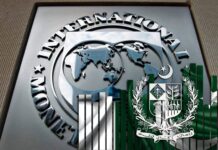Can Pakistan’s economy catch up with the prosperous countries of the West or East Asia? Only if it starts a national effort to stimulate growth. This is the essence of a comprehensive report issued today by the Institute for Policy Reforms. The report sets forth a practical plan of action for achieving rapid economic growth.
“Business, as usual, is no longer an option. Each year an additional two million people enter the job market. … By 2030, Pakistan’s population will touch 260 million, more than half of which will be in cities,” it said.
Economic growth is key for more jobs, better living standards, and poverty reduction. An increase in the economic gap with other countries could affect Pakistan’s regional position. The report details how high growth economies transformed their nations through favourable policies. In 1960, South Korea had a GDP per capita three times of Pakistan. Today, its per capita income is 22 times more.
Pakistan’s policies do not support economic growth. The country must institute wide-scale reforms. Economic growth will come through an interplay of factors. These include a robust macroeconomy, policies to stimulate investment and better governance. Tweaking at the edges will not do.
Pakistan does not generate enough savings for it to invest in future growth. There are a major infrastructure deficit and low private investment. Spending on workers’ skills, education, and other human needs is paltry. Over twenty-two million children are out of school. The macroeconomy does not support growth. These factors have locked the economy in a low/moderate growth trap.
Pakistan’s small manufacturing sector produces low value added goods and contributes just 14pc to the GDP. Governance often burdens businesses. The political economy favours the influential. Resource allocation is inefficient. 44pc of labour works on farms. Other headwinds include fragile security and severe power shortages. Improving the situation “is entirely up to the leadership of the country.”
The report offers a plan for reforms. Examples of other countries show that this can be done. To begin with, Pakistan must increase government revenue to enable it to provide public goods and to reduce external borrowing. Steps are needed to increase domestic savings. High growth economies consistently invest over 25pc of GDP, including 7pc on infrastructure. They spend another 8pc on health and education. Pakistan too must aim for an investment of at least 25pc from the present 15pc of GDP. It must increase the share of GDP of export oriented manufactures and become part of the global value chain.
Public investment must focus on high priority projects in the areas of power supply, transmission/distribution, and water storage and efficiency. It must also strengthen agriculture research and extension services. Investment in skills and education must also increase.
Urban centres are important drivers of growth. To promote economic activity, they must have reliable power, gas, and water supply, mass transit systems, as well as high-class Wi-Fi. Air and sea/dry ports must be of world standards.
A favourable industrial policy will increase value added exports. The government must aid it with tax incentives, low-cost credit, R&D support, dedicated infrastructure, and training of workers. SEZs, being set up under CPEC, should connect with domestic and international markets.
An export-oriented trade policy will stabilise the external account. Of special importance are transit trade and border facilitation. The tariff structure must support the export-led growth. We need to attract FDI in export sectors, said the report.
The government may start new FTA negotiations and resume discussions with Iran. Most importantly, we must avoid treating import duty as public revenue and reform tariffs to support export.
Most of all, the country needs a committed and competent leadership to steward development. It must devise growth policies and build consensus. Public and private players must cooperate to boost economic activity. All incentives must be dispensed without patronage. The government must have a dedicated team of policy makers and experts to help decision making. Policies for the vulnerable and excluded groups are also necessary.
To increase public revenue, authorities must reduce tax evasion. At the same time, they may lighten the burden on the manufacturing sector by enhancing collection from those paying less than their due amount.
The government may review power policy to improve the energy mix and be generous regarding incentives to investors. It must also reduce line and billing losses. Our businesses must have reliable power supply at competitive rates. Acquisition of land for productive purposes must be made easy for businesses and development of organisations.
Availability of trained workforce is the difference between a firm’s success and failure. The government must cooperate with the industry for skill development. It should set aside the needed financial and organisational resource because the present set up needs a complete overhaul.























